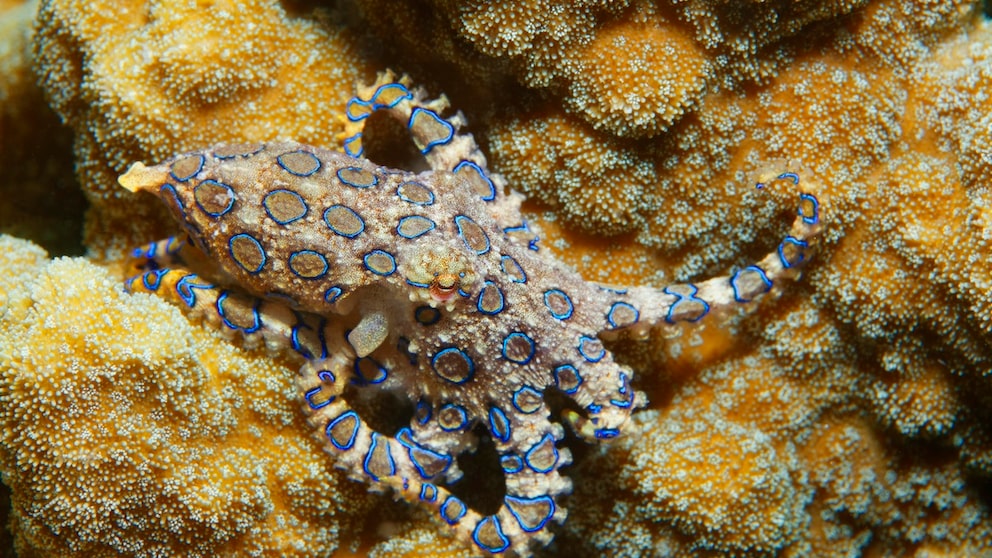March 15, 2025, 9:35 am | Read time: 3 minutes
Nature is full of fascinating survival strategies — and some are particularly drastic. While female praying mantises often eat their partners after mating, male blue-striped octopuses have developed a tactic in reverse: they inject their partners with a powerful neurotoxin to immobilize them during mating. This unusual strategy minimizes the risk of becoming prey themselves — and, at the same time, ensures reproductive success.
Blue-ringed octopuses are among the few animals that produce tetrodotoxin (TTX). This is an extremely strong neurotoxin that can even be fatal to humans. Normally, the poison is used for defense or to hunt prey — but a recent research report shows that male octopuses use the venom for another purpose: reproduction.
Male Octopuses Inject Venom into the Aorta of their Partners
The study investigated the reproductive behavior of blue-striped octopuses (Hapalochlaena fasciata) with a particular focus on the use of venom during mating. It was already known that blue-striped octopuses use the toxin to defend themselves against predators and to paralyze prey.
However, as the female octopuses are almost twice as large as the males, they are also at risk of being eaten by their partners during mating. Sexual cannibalism occurs in many animal species, such as praying mantises and spiders. In these cases, the male is often eaten after mating, which can benefit the offspring.
However, the fact that the venom is also used by octopuses in a sexual context is a new discovery. The mating of the octopods, therefore, sounds like something straight out of a horror movie: They deliberately bite the females in the aorta and inject them with TTX in the process. The toxin induces temporary paralysis, enabling the male to mate undisturbed and subsequently escape.
With the help of video recordings and measurements of the respiratory rate, it was possible to document how the poison affected the females. The paralysis occurred within a few moments of injection. In addition, anatomical analyses were carried out to determine the differences in the size of the salivary glands between males and females.

Fatal Within Minutes The Most Poisonous Animals in the World

Its venom causes pain for months Why the platypus is the most poisonous mammal in the world

15 years in development Novel vaccination sterilizes dogs for a year – will it soon be in Germany, too?
Octopuses Are Becoming Increasingly Venomous
This showed that there is a kind of “evolutionary arms race” among these octopuses. The females have developed a certain resistance to TTX, which means that the males have to produce larger quantities of the toxin in order to cause sufficient paralysis. Consequently, their salivary glands are at least twice as large as those of the females. However, as they develop resistance to the toxin over generations, the male octopus must also become increasingly poisonous.
However, this raises further questions. For example, why do the males bother to flee at all, as they only mate once in a lifetime? The study was unable to clarify whether there might be advantages for the male if it does get a second chance to mate.
In addition, the act of mating is also associated with great stress and subsequent deprivation for the female. This is because female octopuses only mate once. If they are fertilized, the animals display self-destructive behavior. They stop eating and devote themselves solely to protecting their offspring. Indeed, the partner could provide the hungry octopus mothers with a significant advantage as the final nutritious meal for raising their young.
Further studies are needed to understand how this counterintuitive strategy evolved and what advantages it may offer for the species’ survival. However, the study also represents a previously undocumented form of chemical “weapon use” in sexual behavior, which has also hardly been studied to date.1

